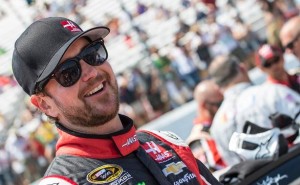The opportunity to be a spectator at any major sporting event can be an awe-inspiring occasion. Surrounded by tens of thousands of like-minded fans cheering for a common goal creates an adrenaline-filled experience for competitors and spectators alike. Elite events such as the Super Bowl and the World Series inspire an even more electric atmosphere for the simple reason that they are historic.
Now, take that major sporting event and place it on the hallowed grounds of one of the world’s most revered venues and the atmosphere becomes more than just a game. It’s a moment in time. While a handful of such venues have fallen by the wayside, many older venues continue to thrive in the modern sports world. A simple Google search yields a variety of lists featuring some of the nation’s most storied locations. From Wrigley Field in Chicago and Fenway Park in Boston to Lambeau Field in Green Bay, Wisconsin and Churchill Downs in Louisville, Kentucky, these historic sites could be considered national landmarks for what they have meant to sports history and the competitive landscape that fans know today.
Certainly a fixture in most all listings of top historic sports venues is Indianapolis Motor Speedway – site of Sunday’s Brickyard 400 NASCAR Sprint Cup Series race. The famed, 2.5-mile oval has been in existence for more than 100 years and has hosted more than 250 races since 1909. For most of its existence, Indianapolis had been a track for open-wheel racecars, but that changed when the Sprint Cup Series began competing there for the annual Brickyard 400 in 1994.
Driver Kurt Busch competed in his first Brickyard 400 during his rookie season in 2001. An avid sports fan himself, the significance of competing at Indianapolis is not lost on the 2004 Sprint Cup champion. Having been to Indianapolis as both a competitor and a fan, the driver of the No. 41 Haas Automation Chevrolet for Stewart-Haas Racing (SHR) understands the importance of being able to compete at the iconic facility.
Busch has made 14 career starts at Indianapolis and scored his best finish there during his very first Indy start, finishing fifth after starting 34th in 2001. He has scored a total of four top-10 finishes during that 14-year stretch and has been running at the end of all but two races – the first in 2002 when he was sidelined due to an accident, the other in 2012 when his day ended prematurely due to an engine failure.
Busch’s experience at Indianapolis isn’t limited to just to competition at the speedway – be it in NASCAR, IndyCar or otherwise. He’s sat in the stands as a fan, taking in the sights and sounds from the other side of the fence, watching the famed Indianapolis 500. Just last year, he added his name to the list of what only three other drivers have attempted – competing in “The Double” – racing in both the Indianapolis 500 and the Coca-Cola 600 on the same day. In an Indy car fielded by Andretti Autosport, Busch finished an impressive sixth, earning Indy 500 rookie of the year honors. After completing all 500 miles at Indy, Busch jetted off to Concord, North Carolina to compete in the Coca-Cola 600 that evening at Charlotte (N.C.) Motor Speedway. He raced competitively but, 271 laps into the longest race on the Sprint Cup schedule, engine problems sent Busch to the garage 129 laps short of the race distance. In all, Busch completed 906.5 miles, leaving Tony Stewart, co-owner with Gene Haas at SHR, as the only driver to complete all 1,100 miles in the grueling trek. Robby Gordon and John Andretti are the only other drivers to attempt The Double on the same day.
A win at the Brickyard this weekend would not only give Busch’s page of history at the 2.5-mile speedway a little more prestige, it would do so in fantastic fashion as the driver of the Haas Automation Chevrolet is looking to finally score a win at Indianapolis and kiss the famed “Yard of Bricks” in celebration.
KURT BUSCH, Driver of the No. 41 Haas Automation Chevrolet SS for Stewart-Haas Racing:
Talk about the new rule package for Indy and what you expect to see this weekend.
“From what I understand about the rules package, it’s an extreme gain in drag. So, when you have a lot of drag introduced to a car, it creates more throttle-on time for that car. What we hope it does is create the ability for the car from behind to get into that wake. To get into that dirty air and have the ability to make a move and pass the car in front of it. What is tough about a stock car versus an Indy car at Indianapolis Motor Speedway is that it’s a flat track and a stock car is so heavy it chews up the tires and it doesn’t corner all that well. We are hoping that the drag will create a big wake going down the straightaways for cars to make big bold moves going into the corners.”
What makes Indy so and so iconic?
“Indy is Indy. It is the coolest racetrack that we get to race on, other than Daytona. The history, the prestige, the value of Indianapolis – it is defined by the number of decades they have produced races there and the atmosphere. It’s very electric at Indianapolis. For me to actually get to run the Indy 500 in the month of May, May is a little different than we race there in July-August because of the fact it is their backyard, it is their stage. Those Indiana natives love their track. What makes Indy special is the people.”
You raced in “The Double” last year. How special was it for you, and do you think about ever attempting it again?
“It’s an incredible atmosphere. The energy, the people, it’s like a perfect time of year with the weather and the speed. To see how Indy cars have evolved and now they are running 230 mph, that track is designed for open-wheel cars. It’s amazing how something built in the early 1900s to challenge and test an automobile’s endurance and speed and its capabilities is still a perfect testing, proving ground today. To run The Double, it was a dream come true. To try to compete for 1,100 miles in two of the toughest races in the same day, personally, it was a long journey. I really enjoyed it and brought away a great finish from Indianapolis but didn’t quite close out the deal in Charlotte with the engine failure. It gives me that taste and desire and that energy, still, to try to do it again. I don’t know if I will be able to do it again but we’ll see. It’s still there. It’s on the back burner, so to speak.”
Kurt Busch’s Indianapolis Motor Speedway Performance Profile:
| Year | Event | Start | Finish | Status/Laps | Laps Led | Earnings |
| 2014 | Brickyard 400 | 7 | 28 | Running, 159/160 | 0 | $152,555 |
| 2013 | Brickyard 400 | 6 | 14 | Running, 160/160 | 0 | $192,270 |
| 2012 | Brickyard 400 | 13 | 36 | Engine, 126/160 | 0 | $145,375 |
| 2011 | Brickyard 400 | 4 | 21 | Running, 160/160 | 0 | $189,900 |
| 2010 | Brickyard 400 | 14 | 10 | Running, 160/160 | 0 | $215,121 |
| 2009 | Allstate 400 at the Brickyard | 40 | 27 | Running, 159/160 | 0 | $164,375 |
| 2008 | Allstate 400 at the Brickyard | 7 | 40 | Running, 119/160 | 0 | $139,425 |
| 2007 | Allstate 400 at the Brickyard | 6 | 11 | Running, 160/160 | 0 | $205,358 |
| 2006 | Allstate 400 at the Brickyard | 3 | 12 | Running, 160/160 | 0 | $211,933 |
| 2005 | Allstate 400 at the Brickyard | 37 | 18 | Running, 160/160 | 0 | $206,825 |
| 2004 | ×Brickyard 400 | 15 | 10 | Running, 161/161 | 0 | $172,900 |
| 2003 | Brickyard 400 | 6 | 7 | Running, 160/160 | 2 | $189,675 |
| 2002 | Brickyard 400 | 38 | 41 | Accident, 34/160 | 0 | $100,045 |
| 2001 | Brickyard 400 | 34 | 5 | Running, 160/160 | 1 | $190,300 |
× Race length extended due to green-white-checkered finish.


